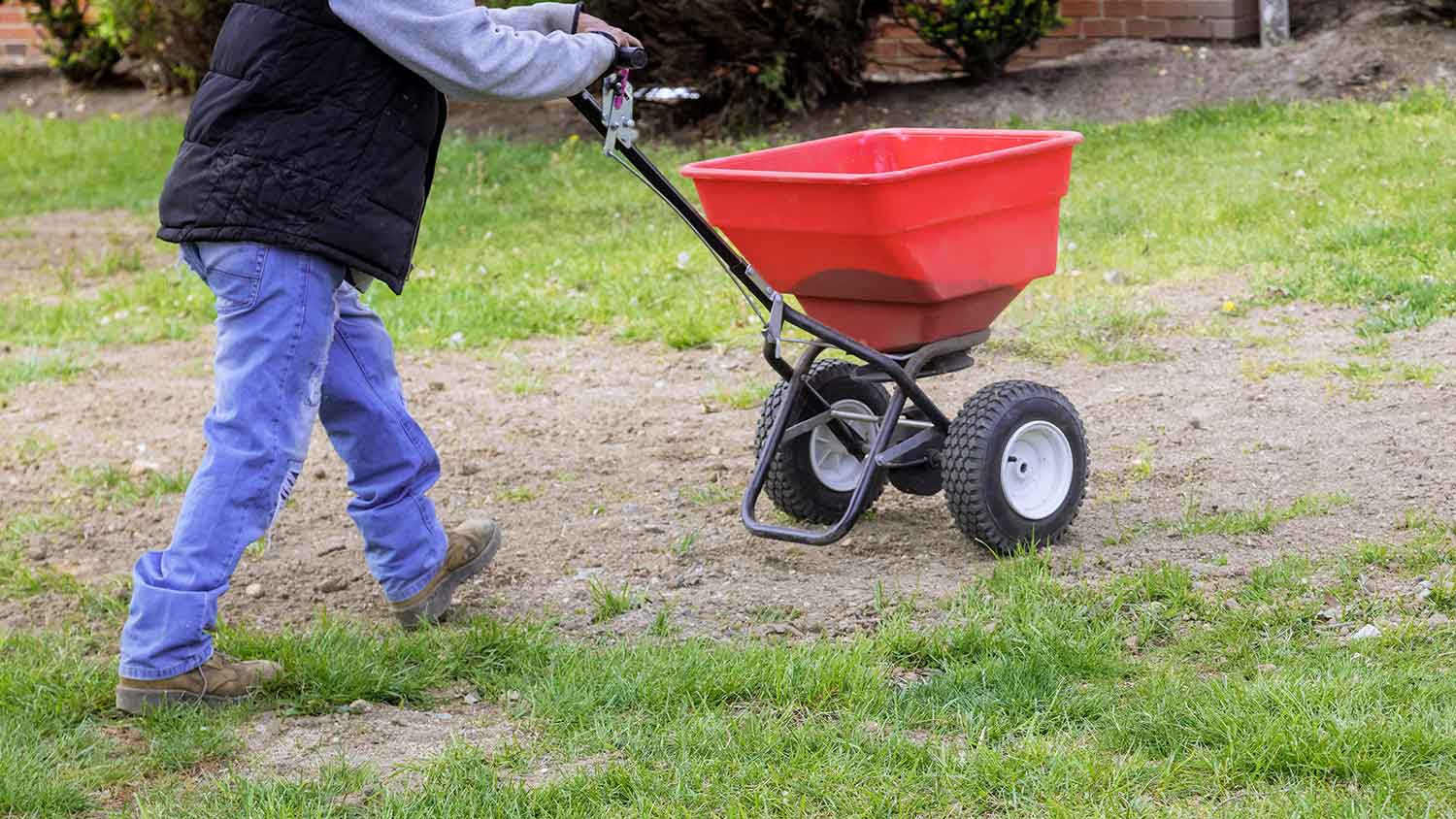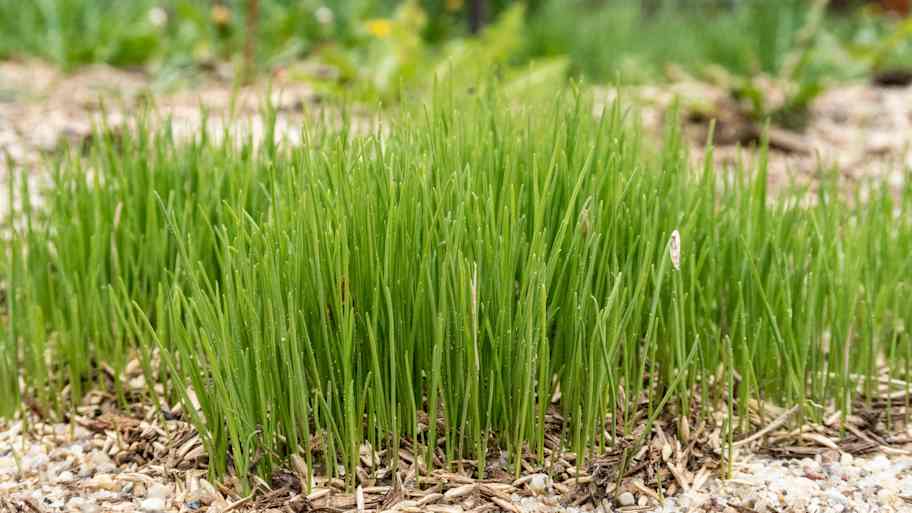
Discover average lawn aeration cost, key price factors, and tips to save. Get a clear estimate for your yard and learn how to choose between DIY and hiring a pro.
Technique and timing are essential to growing a beautiful lawn


The order of grass seed vs. fertilizer depends on if you have a new or existing lawn.
When you should lay seed depends on the type of grass.
Over-fertilizing can damage and even kill seedlings.
Is your lawn looking shabby, or are you trying to seed a new lawn? Whichever it is, you may wonder, "What do you put down first, grass seed or fertilizer?"
Well, the answer depends on a couple of factors, and there are some important lawn maintenance tasks to perform before you put down either one. Luckily, lawn maintenance and aeration pros can help with everything from prepping your yard to planting grass seeds. So, let's dive into which order is best based on your circumstances and what you need to do to prepare your yard for grass seed and fertilizer.
When it comes to laying seed and fertilizing, the order depends on if you are starting a lawn or trying to overseed and nourish your existing lawn. If you are starting new grass, then you want to fertilize it before planting grass seeds, but you need to time the installation correctly.
For an existing lawn, you will typically lay seed and then fertilize it afterward to boost grass growth. However, there are some additional steps you need to take before planting, and there's a bit more to the process you should know for each scenario as well. Let’s dig into the details of each task.
Before you start spreading seed or fertilizer, there are a couple of tasks to ensure your new seed germinates and grows strong and healthy. First, you should test your soil’s pH levels so you purchase the correct fertilizer. This step will help you to determine what nutrients your soil needs to promote healthy growth. You can use an at-home soil-testing kit or hire a professional soil testing service to provide you with the answers you need.
To prepare your yard, pick up sticks and rake debris littering your lawn. Next, you should aerate the soil to loosen compacted dirt. It's difficult for seeds to sprout in hard dirt, so this additional process will allow grass roots to grow easier. You will want to water the lawn a couple of days before you aerate to soften the soil. To make this process run smoother, consider hiring a local lawn aeration service to ensure it’s done correctly and efficiently.
You should utilize a starter fertilizer if you are laying a new lawn. This specialized product has higher phosphorus levels, which promotes root growth. However, phosphorus fertilizers are banned in some states due to the high levels of phosphorus that can cause harm by contaminating water due to runoff or leaching into the groundwater. So, it's essential to test the soil to ensure a shortage of phosphorus and check state regulations so you don't incur fines for using it.
You want to fertilize new lawns six to eight weeks before laying seed. The type of grass will determine when you want to lay fertilizer and seed. For example, cool-season grasses are sown during the fall, so you should put down fertilizer in late summer or early fall. Warm-season grasses are sown in the spring, and you should lay fertilizer in early to mid-spring.
Four to eight weeks after you lay your grass seed, you can use a standard fertilizer to provide your new grass with a nutrient boost. Of course, the timing depends on several factors, such as climate, grass species, and the type of fertilizer. Always read the manufacturer's label and instructions, and wear personal protective gear when using equipment and handling fertilizer per the manufacturer's directions to avoid injuries.

If you are trying to restore patchy or thin grass, it’s best to overseed your lawn before fertilizing it. When laying seed, you will need to water it a few times a day at first, then scale back to every other day after young blades of grass sprout. It's essential to water frequently without drowning the seeds.
Remember to wait at least four to eight weeks before applying fertilizer to allow the grass seed to sprout. You also need to ensure you use the correct amount and give your lawn a good watering the day after you lay the fertilizer. Too much fertilizer without enough moisture can burn up seedlings and plants, which is why it is essential to choose the correct type of fertilizer and follow the manufacturer's directions.
Seeding and fertilizing your lawn is a task you can tackle yourself. However, you will need the correct tools and supplies to get the job done. For instance, if you don't own an aerator, you will need to rent or purchase one to prepare your yard. Plus, it takes time and effort to achieve a healthy, lush lawn.
If you aren't feeling up to the task, you can hire a lawn seeding or lawn aeration professional near you to complete the job instead. That way, you can rest easy knowing a pro can get the job done right, and you will have a flourishing lawn to enjoy without the work. The price depends on your yard's size, job type, and lawn condition. Typically, the cost to hire a professional to seed your lawn costs between $440 to $1,750.
From average costs to expert advice, get all the answers you need to get your job done.

Discover average lawn aeration cost, key price factors, and tips to save. Get a clear estimate for your yard and learn how to choose between DIY and hiring a pro.

Get transparent power seeding cost info to learn what impacts pricing, how to save, and whether to DIY or hire a pro for your lawn’s best results.

Discover average hydroseeding cost, key price factors, and ways to save. Get transparent estimates for your lawn project and make informed decisions for your home.

Brown patches on your lawn may occur for several reasons, including lack of sunlight and overfertilization. Learn how to treat and prevent patches.

Ready to give your yard a fresh start? With these tips for grass seed planting, your lush lawn dreams are one step closer to becoming a reality.

Grass seeds thrive in soil rich in nutrients, but a potting mix will not support your grass’ long-term health. Find out which type of soil is best for grass.